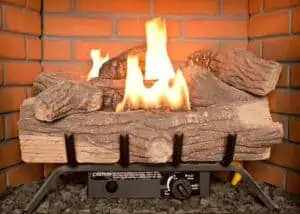What causes cracks in the brick or mortar of a fireplace, and how can they be repaired?
A fireplace is a cozy and inviting addition to any home, but over time, it may develop cracks in the brick or mortar. Cracks can occur for various reasons, such as age, weather exposure, and excessive heat. In this article, we’ll explore the common causes of cracks in the brick or mortar of a fireplace and how to repair them.
(Looking For “Propane fireplace orifice cleaning“? Contact us today?)

Causes of Cracks in a Fireplace.
There are several reasons why cracks may appear in the brick or mortar of a fireplace. One of the most common causes is age. Over time, the materials used to construct the fireplace may begin to break down, resulting in cracks. Exposure to weather conditions, such as rain or snow, can also cause the mortar to deteriorate, leading to cracks.
Excessive heat is another common cause of cracks in a fireplace. The constant expansion and contraction of the materials due to the heat can lead to cracks in the brick or mortar. A chimney fire can also cause significant damage to the fireplace, resulting in cracks.
How to Repair Cracks in a Fireplace?
Repairing cracks in a fireplace can be a tricky process that requires the skills of a professional. Here are some common methods used to repair cracks in a fireplace:
-
Tuckpointing:
Tuckpointing involves removing the damaged mortar and replacing it with new mortar. This method is ideal for repairing small cracks in the mortar of a fireplace. It is important to match the color of the new mortar to the existing mortar to ensure a seamless repair.
-
Brick Replacement:
If the cracks in the fireplace are in the brick, a professional may need to replace the damaged brick. The new brick must match the existing brick in terms of size, color, and texture.
-
Refractory Panel Replacement:
If the fireplace has refractory panels, which are designed to withstand high heat, and they are damaged, they will need to be replaced. Refractory panels are typically made of cement or ceramic and are available in different sizes and shapes.
-
Waterproofing:
Waterproofing can be used to prevent further damage to the fireplace caused by exposure to moisture. A professional can apply a waterproofing sealant to the brick and mortar to prevent water from penetrating the surface.
-
Professional Inspection:
In some cases, cracks in a fireplace may be an indication of a more serious problem. A professional inspection can identify the root cause of the cracks and determine the best course of action.
Conclusion:
Cracks in the brick or mortar of a fireplace are a common problem for homeowners. Age, weather exposure, and excessive heat are common causes of cracks in a fireplace. Repairing cracks in a fireplace requires the skills of a professional, who may use methods such as tuckpointing, brick replacement, refractory panel replacement, waterproofing, or a professional inspection. It is important to address cracks in a fireplace promptly to prevent further damage and ensure the safe operation of the fireplace. Regular maintenance and inspections can also help prevent cracks and ensure the longevity of the fireplace.

